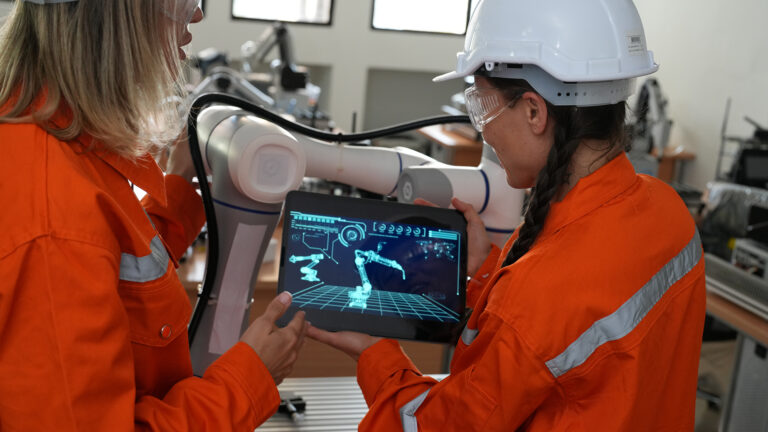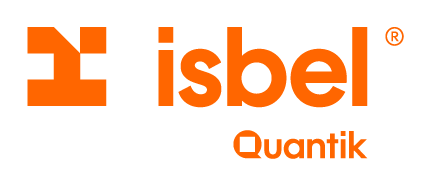As we move into 2024, the telecommunications landscape looks exciting and full of opportunities. From the proliferation of 5G technology to the convergence of artificial intelligence (AI) and the internet of things (IoT), major developments are on the horizon that are shaping the future of the industry.
In this article, we will explore some of the trends that will shape the direction of telecommunications in the coming years and their impact on society, the economy and technology.
Advanced 5G applications in different sectors
5G technology has been the focus of attention in the telecommunications arena due to its revolutionary capabilities. Offering ultra-fast connection speeds, low latency and increased network capacity, 5G is paving the way for a new era of communication and connectivity. This fifth generation of mobile networks promises an enhanced user experience, as well as driving innovation in a wide range of applications and services.
The implementation and expansion of this type of network is transforming the connectivity landscape around the world. Different countries are competing to lead this technological race and investing in state-of-the-art infrastructure to deploy 5G on a large scale.
If we think about concrete applications, 5G in education is revolutionizing the way students access knowledge and participate in online learning experiences. For example, students can participate in real-time, immersive virtual classes, access interactive educational resources, and collaborate with peers from anywhere seamlessly.
We experienced a real case of this at Quantik: last year we carried out a virtual reality educational experience together with the Faculty of Economics, the results of which we presented at a congress in the United States.
In the manufacturing industry, 5G is enabling smart manufacturing, also known as Industry 4.0. Thanks to its ultra-fast and reliable connectivity, factories can implement advanced automation systems, such as robots and interconnected machines, to optimize production, improve efficiency and reduce operating costs. In addition, 5G enables the incorporation of predictive maintenance solutions that help prevent machine failures and minimize downtime.
I recommend this article by Mauricio, in which he details innovative uses of technologies that work optimally with 5G (augmented or virtual reality, among others). Associated with the previous paragraph, a use case consists of an expert person who remotely assists an operator from anywhere in the world in real time, while the operator is operating a machine with a visor.
In the entertainment industry, this technology is bringing immersive and personalized experiences to users. With ultra-fast download speeds and low latency, users can seamlessly stream video content in 4K or even 8K resolution, enjoy uninterrupted online gaming and access high-quality virtual and augmented reality services from their mobile devices.
In addition, 5G facilitates the creation of interactive content and live streaming experiences that allow viewers to actively participate and immerse themselves in the content.
In addition to the examples I mentioned, the impact of 5G can also be seen in these areas:
- In healthcare, it is driving significant advances in medical care, enabling applications such as telehealth, telemedicine and remote surgery. For example, doctors can conduct real-time virtual consultations, share high-resolution medical images and operate on a patient using remotely controlled surgical robots, thanks to the low latency and high reliability of 5G.
- In the transportation and logistics sector, this technology enables communication between autonomous vehicles, road infrastructure and traffic management systems. This enables safer and more efficient driving, as well as the implementation of ride-sharing and last-mile delivery services. In particular, in logistics, 5G facilitates real-time management of vehicle fleets, tracking of goods and route optimization.
- For the energy sector, it facilitates smart grid management, monitoring of critical assets and optimization of energy distribution. This enables greater energy efficiency, faster response to demand fluctuations and smoother integration of renewable energy sources.
- There are also applications for the agricultural and forestry industries: this technology enables real-time monitoring of crops, automation of agricultural processes and optimization of resources such as water and fertilizers. This helps to increase productivity, reduce costs and minimize environmental impact. Another functionality made possible by 5G is the early detection of forest fires, using gas sensors that issue real-time alerts.
Integration of artificial intelligence (AI) and machine learning in telecommunications
AI is transforming every industry, including telecommunications. I share a very comprehensive article by a colleague on this topic, which addresses how AI applied to telcos improves network management and energy efficiency (on points such as anticipating problems and optimizing performance), and how it can help with cybersecurity.
Enhanced connectivity for IoT
IoT has experienced exponential growth, enabled by the development of faster and more reliable networks (5G). For this reason, connected devices that offer intelligent and automated services in different contexts have proliferated.
Today we naturally see all kinds of devices connected and providing information in real time. Whether it's wearables that monitor vital signs and support proactive medical interventions, intelligent inventory management that improves the customer experience in stores, or intelligent building control systems that manage lighting and air conditioning, improving energy efficiency.
IoT is transforming cities into smart environments that improve quality of life through traffic optimization, efficient management of public services and improved public safety. Uruguay leads the region in the application of IoT in electric telemetering.
This technology leverages the connectivity of each meter to monitor and manage electricity consumption remotely. The data collected by the smart meters is transmitted to the utilities, enabling more detailed analysis of energy use, detecting faults in real time and optimizing electricity distribution.
It also gives users the possibility of choosing between different tariff schemes. This translates into more efficient energy management and the promotion of smart grids.
Security challenges
Every IoT device represents a potential entry point for cyber attacks. Strong authentication and data encryption are essential to protect communication between devices and networks. In addition, it is critical to manage permissions and access to ensure that only authorized users and devices can access the network and data. Regular security updates and patches become a challenge for enterprise IT and security teams, given the sheer volume and diversity of connected devices.
In addition, user data privacy is a concern, as large-scale data collection and analysis pose significant risks if not handled properly. Therefore, the implementation of advanced security technologies and the development of uniform security standards are a priority to address these vulnerabilities.
In a following article, we will continue this exploration of telecom industry news by discussing blockchain and cybersecurity and connectivity provided by low-orbit satellites.
By:
Federico Morales, Business Manager.



